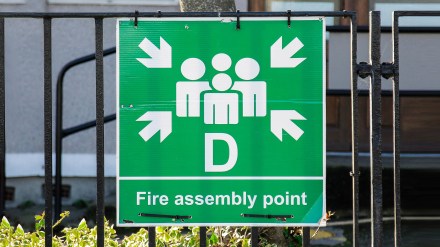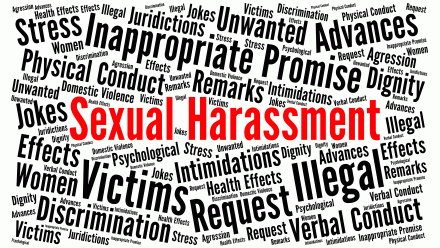A California case decided in 2017 and involving a youth soccer organization is immensely important to church leaders—both now and going forward—because of the conclusions reached by an appellate court in that state.
In Doe v. United States Youth Soccer Association, the court ruled that an organization had a legal duty to perform criminal background checks on employees and volunteers, and could be liable for the sexual molestation of minors by unscreened workers.
The historic ruling represented the first reported case in the country in which a court unequivocally reached this conclusion.
The court’s decision, as well as the reasoning behind it, operates as precedent in the California courts only. But it also may prove persuasive to courts in other states. All youth-serving organizations, including churches, must take note.
Facts
A 12-year-old girl (the “plaintiff”) was sexually abused by her soccer coach.
She sued national, state, and local youth soccer associations (the “defendants”), claiming that they were responsible for her injuries on the basis of negligence and willful misconduct. She claimed that the defendants had a duty to protect her from her coach’s criminal conduct, and that the defendants breached their duties to her by failing to conduct criminal background checks and by failing to warn or educate her or her parents about the risk of sexual abuse.
A trial court granted the defendant’s motion to dismiss the lawsuit on the ground that they had no duty to protect the plaintiff from criminal conduct by a third party. The plaintiff appealed. A state appeals court reversed the trial court’s dismissal of the case, finding that the defendants had a duty to conduct criminal background checks of all adults who would have contact with children involved in their programs.
The KidSafe Program
In 1994, the national soccer association acknowledged that pedophiles were drawn to its youth soccer program to gain access to children, and its program presented an unacceptable risk of harm to children unless appropriate preventative measures were taken.
US Youth developed the KidSafe Program, which was designed to educate adult volunteers, coaches, employees, parents, and players participating in its soccer programs regarding the prevention and detection of sexual abuse.
The KidSafe Program states that its ultimate objective is “to exclude from participation … all persons who have been convicted of felonies, crimes of violence or crimes against a person.”
Sometime in the mid-1990s, the national soccer association distributed hundreds of copies of its KidSafe Program pamphlets to each state association. Thereafter, it sent copies of these educational pamphlets on request. Many of these pamphlets, which could be accessed through links on defendants’ websites, emphasized the importance of teaching parents and other adults about the warning signs of sexual abuse in youth sports and how to detect predators. The pamphlets also listed safety guidelines, which set forth appropriate conduct for adults and outlined “red flags” or warning signs of abuse. In addition, the national soccer association presented KidSafe Program materials at annual and regional meetings.
However, neither the national nor state defendants required that the local soccer association’s coaches, volunteers, trainers, and administrators receive or be trained in the KidSafe Program. The local soccer association never conducted any meetings for parents to discuss the KidSafe Program.
Neither it nor the state association emailed links to the KidSafe Program pamphlets to parents of children participating in youth soccer programs.
The coach’s conduct
In the spring of 2011, the plaintiff joined a local soccer club. Her coach violated several of the national soccer association’s safety guidelines:
- he held practices for which he was the only coach present in June 2011 and Hat the weeklong soccer camp in August 2011;
- he made excessive and disproportionate physical contact with the plaintiff;
- he drove the plaintiff to and from practices and games alone;
- he helped her put away equipment after practices as the other players were leaving or had left and they could not be seen from the field;
- he singled out the plaintiff for training sessions involving one or two players;
- he acted “impulsively, immaturely, and in an egocentric manner” by abruptly leaving the field during practices;
- he used inappropriate and excessive physical discipline as well as foul and offensive language;
- he spent extensive time alone with the plaintiff on June 11 and 12, 2011;
- he drove her alone to and from a tournament in another town, even though her parents attended 30 minutes of the final game;
- during the tournament, he took the plaintiff alone for two walks;
- he engaged in grooming behavior of the plaintiff and her family when he became friendly with them, visited them at their home, was helpful to them, and offered to drive the plaintiff to games and practices and to pick her up from such events when her parents were unable to do so.
After parents complained about the coach’s harsh discipline of the girls, the local soccer club reassigned him to a boys’ soccer team.
Since the boys’ team practiced at the same time as the girls’ team, the coach continued to select the plaintiff and sometimes another girl to practice with the boys.
In November 2011, the club suspended the coach.
Though it became more difficult for the coach to have contact with the plaintiff, he continued to do so.
Since the soccer club did not inform the plaintiff’s parents that the coach had been suspended due to inappropriate touching of the plaintiff and one-on-one contact with her, the club withheld information that would have put the plaintiff’s parents on notice that they needed to be “extra vigilant” in keeping the coach away from their daughter.
Criminal records checks
The national youth soccer’s bylaws require that its state associations and each affiliate league collect and screen criminal conviction information on its coaches, trainers, volunteers, and administrators who will be in contact with youth members.
The national youth soccer organization negotiated a discounted rate with an online vendor to permit state associations, leagues, or teams to obtain nationwide criminal background checks on an applicant for $2.50 per search. National youth soccer kept records regarding which state associations did and did not conduct these background checks and distributed monthly reports indicating which individuals had been disqualified from participation in soccer programs due to prior convictions.
In 2009, the founder of the local soccer club and a member of the state soccer association’s Hall of Fame was charged with multiple felony child molestation offenses arising from incidents with two 11-year-old boys. The perpetrator had been a coach, volunteer, and referee for local soccer activities until at least 1998.
The local club was unaware of his prior convictions for child sexual abuse from the mid-1990s, because it did not conduct criminal background checks.
When the defendant applied for a coaching position with the local club in 2010, he was required to fill out a form that asked whether he had been convicted of a felony, a crime of violence, or a crime against a person. The disclosure form stated that the national soccer association might deny certification to any person who has been convicted of these types of offenses.
Though the coach had been convicted in 2007 of battery against his spouse, he answered “no” to each of these categories and authorized the state and local associations to confirm this information. Neither conducted a criminal background check.
Though the national soccer association knew that voluntary disclosure by an applicant of his or her criminal convictions was ineffective, it did not require its affiliates to conduct criminal background checks. The risk management committee of the national association recommended that mandatory criminal background checks be required. A memorandum to the association stated:
From a risk management standpoint it certainly makes good sense to conduct criminal background checks of all volunteer and paid adults that have contact with minor players. But, from a negligence standpoint, regularly conducting criminal background checks of volunteers and paid adults creates a self-imposed duty to do the same for all that serve in a similar capacity. The failure to conduct such a check would be considered as a breach of duty, which, in turn could mean liability.
The local club also knew that a criminal background check would identify applicants who lied about their background on the self-disclosure form, but it failed to conduct criminal background checks. The local club also chose not to interview the plaintiff and her parents, because it did not want a scandal or lawsuit.
The court’s ruling
The plaintiff’s negligence claim against the defendants rested on their failure to require or conduct criminal background checks and to warn or educate her about the risks of sexual abuse. The court noted that “as a general matter, there is no duty to act to protect others from the conduct of third parties.” However, “a defendant may owe an affirmative duty to protect another from the conduct of third parties if he or she has a special relationship with the other person.”
A special relationship exists when “the plaintiff is particularly vulnerable and dependent upon the defendant who, correspondingly, has some control over the plaintiff’s welfare.” The court continued:
Generally, a greater degree of care is owed to children because of their lack of capacity to appreciate risks and avoid danger. Consequently, California courts have frequently recognized special relationships between children and their adult caregivers that give rise to a duty to prevent harms caused by the intentional or criminal conduct of third parties. Recognized special relationships include an operator of a preschool or day care center to the children in attendance; a school district to a mother whose child was sexually molested by another student because the school stood in loco parentis while the child was in attendance; and the wife of a sexual offender to children she invited to play in her home because being of tender years they were particularly vulnerable to this sort of misconduct and not fully able to protect themselves against it.
The court referred to an earlier ruling by the California Supreme Court finding a special relationship between scout leaders and scouts “based on the vulnerability of children and the insidious methods of sexual offenders.” Juarez v. Boy Scouts of America, 81 Cal. App.4th 377 (Cal. App. 2000).
The court concluded that there was a special relationship between the defendants and the plaintiff:
The plaintiff was a member of national youth soccer and played on a local team that was the local affiliate of national and state youth soccer associations. In addition, the local club was required to comply with the policies and rules of the national association. And, since the national association established the standards under which coaches were hired, it determined which individuals, including the defendant coach, had custody and supervision of children involved in its programs.
The court clarified, however, that “a duty to take affirmative action to control the wrongful acts of a third party will be imposed only where such conduct can be reasonably anticipated.” That is, was “the degree of foreseeability … high enough to charge the defendant with the duty to act on it”? The defendants had no knowledge that the defendant coach had previously sexually abused anyone or had a propensity to do so. But, it added:
National youth soccer was “aware of incidents of physical and sexual abuse of its members by its coaches at a steady yearly rate of between 2 and 5 per year. More importantly, in recognition of the risks of sexual abuse to its players, it had developed the KidSafe Program, which included a pamphlet that stated: “One out of every 4 girls and one out of every 6 boys will be sexually abused before the age of 18. Fact: Pedophiles are drawn to places where there are children. All youth sports, including youth soccer, are such places.” Though these statements did not establish the rate of sexual abuse in youth soccer programs, they were an acknowledgement by the national youth soccer association that children playing soccer were at risk for sexual abuse. As to the state and local defendants, there is no indication of the frequency of sexual abuse incidents affecting players in their leagues. However, both adopted the KidSafe Program, which acknowledged that their soccer programs attracted those who might sexually abuse their players and that there had been incidents of sexual abuse. Moreover, the year before the defendant coach submitted his application, both the state and local defendants were aware of multiple sexual abuse incidents involving [a former prominent coach]. It is not clear whether these incidents occurred as a result of his participation as a coach, volunteer, or referee for youth soccer activities, but these incidents demonstrated that pedophiles were drawn to activities involving children. Thus … we conclude that it was reasonably foreseeable to defendants that a child participating in their soccer program would be sexually abused by a coach.
The national, state, and local defendants argued that it would impose a “tremendous burden” to mandate criminal background checks for employees and volunteers in their programs, because the availability of criminal background checks varies among the states. The defendants also claimed that volunteers working with children in the majority of states are not required to undergo criminal background checks and private entities are not allowed to obtain national criminal background checks on volunteers in many states.
The court rejected this argument, noting that “nearly all of the state associations have been conducting criminal background checks on all volunteers, coaches, and trainers since 2010, thus showing that it would not have been overly burdensome” for the state and local defendants to do so.
The national soccer defendant also argued that the cost of mandating criminal background checks would be substantial:
US Youth registers over 900,000 administrators, coaches and volunteers annually and … if criminal background checks cost $2.50 per check, this would amount to $2.25 million.” If members of a team or the applicant had paid for the criminal background check, defendants would not have born the cost. More importantly, there was and continues to be no cost for criminal background checks in California pursuant to a statute providing that no fee shall be charged to nonprofit organizations for criminal background checks.
In finding the defendants guilty of negligence for not mandating criminal records checks of volunteers and others who work with minors in youth soccer, the court observed:
If defendants had conducted a criminal background check of the defendant coach, his prior conviction for domestic violence would have been discovered and it would have been highly unlikely that he would have been hired. Thus, he would have had far fewer, if any, opportunities to sexually abuse plaintiff. As to the policy of preventing future harm, our society recognizes that the protection of children from sexual abuse is a paramount goal. Imposition of a duty to conduct criminal background checks on defendants would assist in the achievement of this goal… . Here, balancing the degree of foreseeability of harm to children in defendants’ soccer programs against their minimal burden, we conclude that defendants had a duty to require and conduct criminal background checks of defendants’ employees and volunteers who had contact with children in their programs. . . . [P]reventing harm to children is a paramount goal of our society. Since we have found that defendants had a duty to plaintiff, the [plaintiff’s] complaint states sufficient facts to constitute a cause of action for negligence.
Relevance to church leaders
There are some aspects to the California appellate court’s decision that are instructive for all churches, even though the decision is only binding in California.
1. Negligence
The court acknowledged that generally there is no duty to protect others from the criminal activity of third persons. One court stated the general rule as follows: “One human being, seeing a fellow man in dire peril, is under no legal obligation to aid him, but may sit on the dock, smoke his cigar, and watch the other fellow drown. Such decisions have been condemned by legal writers as revolting to any moral sense, but thus far they remain the law.” Mackey v. U.S., 2007 WL 2228663 (6th Cir. 2007).
But there are exceptions to this rule, and one of them was at issue in the California case. The court concluded that a duty to intervene to protect another from harm may arise if the victim (1) has a “special relationship” with another, and (2) harm to the victim is reasonably foreseeable. The court concluded that a special relationship exists between a minor child and a youth-serving organization (such as a soccer club or church). It also concluded that “it was reasonably foreseeable to defendants that a child participating in their soccer program would be sexually abused by a coach.”
In support of its finding of foreseeability, the court noted:
[National youth soccer] was aware of incidents of physical and sexual abuse of its members by its coaches at a steady yearly rate of between 2 and 5 per year. More importantly, in recognition of the risks of sexual abuse to its players, it had developed the KidSafe Program, which included a pamphlet that stated: “One out of every 4 girls and one out of every 6 boys will be sexually abused before the age of 18. Fact: Pedophiles are drawn to places where there are children. All youth sports, including youth soccer, are such places.” Though these statements did not establish the rate of sexual abuse in youth soccer programs, they were an acknowledgement by the national youth soccer . . . . association that children playing soccer were at risk for sexual abuse. . . . We conclude that it was reasonably foreseeable to defendants that a child participating in their soccer program would be sexually abused by a coach.
The court concluded that the soccer defendants were liable for the plaintiff’s injuries based on their negligence in failing to perform a criminal background check. It noted that “defendants had a duty to require and conduct criminal background checks of defendants’ employees and volunteers who had contact with children in their programs . . . . Since we have found that defendants had a duty to plaintiff, the [plaintiff’s] complaint states sufficient facts to constitute a cause of action for negligence.”
2. The risk of pedophilia
This case demonstrates the risk pedophiles represent in any program or activity involving minors. The defendant coach saw coaching as a way to recruit, groom, and molest potential victims. Church leaders must be aware of this risk and take steps to reduce or eliminate it. The term pedophile is widely used but poorly understood. Often, it is used synonymously with child molester.
The DSM-IV is the standard classification of mental disorders used by mental health professionals in the United States and contains a listing of diagnostic criteria for every psychiatric disorder recognized by the U.S. healthcare system. The current edition, DSM-IV-TR, is used by professionals in a wide array of contexts, including psychiatrists and other physicians, psychologists, social workers, nurses, occupational and rehabilitation therapists, and counselors.
The DSM-5 contains the following definition of ”pedophilic disorder”:
- Over a period of at least 6 months, recurrent, intense sexually arousing fantasies, sexual urges, or behaviors involving sexual activity with a prepubescent child or children (generally age 13 years or younger).
- The individual has acted on these sexual urges, or the sexual urges or fantasies cause marked distress or interpersonal difficulty.
- The person is at least age 16 years and at least 5 years older than the child or children in Criterion A.
Note: Do not include an individual in late adolescence involved in an ongoing sexual relationship with a 12- or 13-year-old.
This definition is important particularly because it includes the following four characteristics:
- promiscuity.
- predatory behavior.
- incurability; and
- high recidivism rates.
These characteristics were noted in Child Molesters: A Behavioral Analysis, by former FBI agent Kenneth Lanning.
He notes:
Although a variety of individuals sexually abuse children, preferential-type sex offenders, and especially pedophiles, are the primary acquaintance sexual exploiters of children. A preferential-acquaintance child molester might molest 10, 50, hundreds, or even thousands of children in a lifetime, depending on the offender and how broadly or narrowly child molestation is defined. Although pedophiles vary greatly, their sexual behavior is repetitive and highly predictable. . . . Those with a definite preference for children (i.e., pedophiles) have sexual fantasies and erotic imagery that focus on children. They have sex with children not because of some situational stress or insecurity but because they are sexually attracted to and prefer children. They have the potential to molest large numbers of child victims. For many of them their problem is not only the nature of the sex drive (attraction to children), but also the quantity (need for frequent and repeated sex with children). They usually have age and gender preferences for their victims.
The Association for the Treatment of Sexual Abusers website states:
Offenders who seek out children to victimize by placing themselves in positions of trust, authority, and easy access to youngsters can have hundreds of victims over the course of their lifetimes. One study found that the average number of victims for non-incestuous pedophiles who molest girls is 20; for pedophiles who prefer boys, over 100. Church leaders also should be aware that pedophilia generally is considered to be incurable, and very difficult to control. In addition, pedophiles have a high recidivism rate, meaning that those who are convicted and sentenced to prison are likely to revert to such behavior upon their release.
The Association for the Treatment of Sexual Abusers website states that “predatory pedophiles, especially those who molest boys, are the sex offenders who have the highest recidivism rates. Over long follow-up periods, more than half of convicted pedophiles are rearrested for a new offense.” As this case illustrates, youth-serving charities are a magnet for pedophiles, and as a result these charities must exercise constant vigilance in selecting and screening workers.
In summary, it is important for church leaders to understand the definition of pedophilia, since this condition is associated with several characteristics including promiscuity predatory behavior incurability, and high recidivism rates.
Key point. According to the FBI and other knowledgeable sources, pedophiles are characterized by the following four characteristics: (1) predatory behavior; (2) promiscuity; (3) incurability; and (4) high recidivism rate.
3. Risk management
The California case addressed in this article is the first reported case in which a court ruled that youth-serving charities have a legal duty to perform criminal background checks on employees and volunteers who work with minors. It is likely that this conclusion will be followed by some, perhaps many, courts in other jurisdictions. Church leaders should view criminal background checks on all persons, both employees and volunteers, who work with minors, as a best practice. This is so for two reasons.
First, many youth-serving national charities have been mandating criminal background checks for years, and the same is true for public schools. This makes it increasingly difficult for churches to explain why they fail to require such checks. By failing to follow the practice of public schools (a state agency) and an increasing number of youth-serving charities, a church is exposing itself to a greater risk of being found liable on the basis of negligence for the sexual abuse of children because of its failure to follow the “community standard.”
Second, it is likely that an increasing number of courts in multiple jurisdictions will follow the California court’s lead and impose a legal duty on youth-serving charities to conduct criminal background checks.
4. Criminal background checks are one component of a risk management strategy
Church leaders should not view criminal background checks as the only risk management technique to be used. Instead, risk management should be viewed as a basket of precautionary measures that include many or all of the following:
1. Interview. Interview all applicants for youth and children’s ministry positions. This applies to both paid employee and unpaid volunteer positions. Interviews provide the church with an opportunity to inquire into each applicant’s background and evaluate each person’s suitability for the position under consideration.
2. A written application. Every applicant for youth or children’s ministry (volunteer or compensated) should complete an application. At a minimum, the application should ask for the applicant’s name and address, the names of other youth-serving organizations in which the applicant has worked as an employee or volunteer, a full explanation of any prior criminal convictions, and the names of two or more personal references.
3.“Institutional references.” The best reference is an institutional reference. This is a reference from another institution or organization in which the applicant has worked with minors either as a paid employee or an unpaid volunteer. The key question to ask is whether the institution is aware of any information indicating that the applicant poses a risk of harm to minors or is in any other respect not suitable for youth or children’s ministry. Obviously, obtaining a positive reference from one or more other institutions that have observed the applicant interact with minors is the gold standard in screening prospective youth and children’s workers. Some applicants have not worked with other youth-serving institutions in the past, and so no institutional reference is available. In such cases, a church’s only option is to obtain personal references. However, risk can be reduced by limiting personal references to members of the church.
For nonminister employees and volunteers, the best references will be from other churches or charities in which the applicant has worked with minors. Examples include Boy/Girl Scouts, Big Brothers/Sisters, Boys/Girls Clubs, YMCA, Little League, Catholic Charities, public or private schools, youth sports, or other churches or religious organizations. Seek a reference from every such organization in which the applicant has served. Your application form should ask applicants to list all such organizations, including contact information.
For persons seeking a position as a youth or children’s pastor, institutional references include other churches in which the applicant has worked in youth or children’s ministry, and the church or denomination with which the person is ordained, licensed, or commissioned.
Often, a church will not receive a response to a written reference request. In such a case, contact the reference by phone and prepare a written memorandum noting the questions asked and the reference’s responses. Show the date and method of the contact, the person making the contact, the reference’s identity, and a summary of the reference’s remarks. Such forms, when completed, should be kept with an applicant’s original application. They should be kept permanently.
Caution. Be sure you are aware of any additional legal requirements that apply in your state. For example, a number of states have passed laws requiring church-operated child-care facilities to check with the state before hiring any applicant for employment to ensure that each applicant does not have a criminal record involving certain types of crimes. You will need to check with an attorney for guidance.
4. A six-month rule. Churches can reduce the risk of sexual molestation of minors by adopting a policy restricting eligibility for any volunteer position involving the custody or supervision of minors to those persons who have been members in good standing of the church for a minimum period of time, such as six months. Such a policy gives the church an additional opportunity to evaluate applicants, and will help repel persons seeking immediate access to potential victims.
5. Benchmarking. “Benchmark” church policies by comparing them with the policies of other charities and the public schools. Check with other churches and youth-serving charities (i.e., YMCA, Boy/Girl Scouts, Big Brothers/Sisters) to see how your procedures compare. Most importantly, check with your public school district. Public schools are agencies of the state, and therefore by aligning your procedures to those of public schools you are going a long way in demonstrating that your procedures are reasonable and not negligent.
6. Periodic review of your policies by legal counsel. Having an attorney periodically review your worker selection procedures will help to establish the exercise of reasonable care which will reduce the risk of both harm and a finding of negligence.
7. Adopt a “two-adult” policy. Adopt a two-adult policy prohibiting a child from being alone with an unrelated adult during any church activity. This rule reduces the risk of child molestation, and reduces the risk of false accusations of molestation.
8. Criminal records checks. Conduct criminal records checks on employees and volunteers who will interact with minors as part of their duties. Criminal records checks include a nationwide search of sex offender registries, and a national criminal file search. Criminal records checks are inexpensive and convenient, and they are an essential component of risk management. Preferential pricing often is available from your insurance company. Never hire anyone in a youth or children’s ministry position, as either an employee or volunteer, who was or is on a sex offender registry in any state.
Other crimes are disqualifying as well if they suggest that a person poses a risk of harm to minors. If in doubt about the relevance of a particular crime, a good practice is to bar persons from youth or children’s ministry who would not be eligible to work as a public school employee. Your local public school district offices should be able to provide you with a list of disqualifying crimes.
9. Prompt reporting of child abuse. It is imperative for church leaders to comply with their state’s child abuse reporting law. Promptly report all known and reasonably suspected cases of child sexual abuse to the designated state agency. In some states a report must be filed within 24 hours. Know the reporting requirement in your state. Be sure to make a telephone memorandum of your call, and ideally have a second person listening in on the conversation who can sign the memorandum as a witness. Resolve any and all doubts in favor or reporting. Prompt reporting has several advantages:
- It is required by law (for mandatory reporters).
- You avoid misdemeanor liability for failure to report.
- You avoid civil liability in many states for not reporting.
- Reporters are given immunity from liability in every state (except for malicious behavior).
- You protect the current victim from further harm.
- You are placing the abuser’s identity in the criminal justice system, making it more likely that this information will be flagged to other churches and youth-serving charities seeking a reference.
- You minimize the risk of public outrage that can be unleashed if your church failed to report the abuse to the state and the offender molests other minors.
10. Promptly address and halt high-risk behaviors. Often, those who molest minors in churches or during church activities have openly engaged in high-risk behaviors, including:
- Minors spending the night in a leader’s home.
- An adult leader drives a vehicle with one or more unrelated minors on board, and no other adults.
- An adult goes on day trips with an unrelated minor.
- An adult goes on overnight trips with an unrelated minor.
- A leader spends the night in a hotel with one or more unrelated minors.
- A leader meets one or more minors in malls or other places where minors congregate.
- An adult leader sleeps in a tent with an unrelated minor during a campout.
- A person frequently takes pictures of one or more unrelated minors (viewed by some as the best indicator of pedophilia).
These, and similar, “grooming” behaviors are associated with many incidents of sexual abuse involving youth and children’s ministry leaders in churches. It is imperative that they be promptly confronted and stopped.
11. Social media. As a “best practice,” churches should prohibit any direct or private messaging on any social media platform by a youth or children’s pastor or lay volunteer with unrelated minors. For support, contact your local public school district and find out what if any restrictions they place on communications between teachers and students.
12.Training. Churches should conduct periodic training of employees and volunteers on recognizing and reporting child abuse, the identification of abused minors, and the importance of familiarity with the 13 recommendations summarized in this document.
13. Negligent supervision. Churches can use reasonable care in selecting workers, but still be liable for injuries sustained during church activities on the basis of negligent supervision. The term negligence means carelessness or a failure to exercise reasonable care. Negligent supervision, then, refers to a failure to exercise reasonable care in the supervision of church workers and church activities. Churches have been sued on the basis of negligent supervision in a variety of contexts, but most often in child abuse cases. Adequate supervision involves a number of safeguards, including:
- Lock rooms and hallways that are not being used;
- Use video technology;
- Have an adequate number of adults present during youth and children’s activities to monitor workers and activities;
- Enforce a two-adult policy prohibiting one adult worker from being alone with one minor;
- No “early releases” of minors;
- Only release minors to the parent or other adult who brought them;
- Be especially vigilant with off-site activities such as field trips and camping since they present potential opportunities for sexual abuse due to the difficulty of adequate supervision.
- Exclude known or registered sex offenders from any youth or children’s activity;
- In formulating polices, “benchmark” by examining the policies of other charities and the public schools.
14. Video technology. The installation of video cameras in strategic locations can serve as a powerful deterrent to child molesters, and can reduce a church’s risk of negligent supervision. Video technology has become affordable for most churches, and should be considered by all churches as both a powerful deterrent and as a means of proving or disproving alleged misconduct. Consider the following uses:
- Video cameras are especially helpful in a church’s nursery since infants and very young children are present who are incapable of explaining symptoms of abuse. In such cases, innocent nursery workers may be suspected who lack the ability to conclusively prove their innocence. Video cameras can be helpful in documenting how symptoms of abuse may have occurred, and in proving the innocence or guilt of nursery workers.
- Church restrooms present a unique risk of molestation for both infants and older children. After all, they are frequented by children, they are easily accessible, and they often are in remote locations or are not adequately supervised. A video camera installed in a hallway outside a restroom frequented by minors can be a powerful deterrent to child molesters. It also will provide church leaders and local authorities with evidence in the event that a minor is molested in a church restroom.
Key point. Look at these 14 steps as ways to protect minors rather than as a risk management tool. If your goal is risk reduction, compliance is likely to suffer. Compliance is higher and of longer duration when leaders are motivated primarily by a desire to protect minors.
Richard R. Hammar is an attorney, CPA and author specializing in legal and tax issues for churches and clergy.



















